A Comprehensive guide to Angle Grinders and Their Applications
Key takeaway
Angle grinders are versatile and powerful tools, they been thoroughly explored in this guide. With insights into mechanics, safety measures, techniques, and applications across industries, you will be equipped to unleash your creativity and expertise. Remember, mastering safety is as crucial as mastering the tool itself – so embrace the versatility of angle grinders while ensuring a secure and productive work environment. Lets dive in!
Introduction
In the world of power tools, angle grinders stand as versatile workhorses that have earned their place across a range of industries. These compact and powerful tools have become indispensable for tasks ranging from metal fabrication to woodworking, thanks to their ability to cut, grind, and shape materials with precision and efficiency. Angle grinders come in various types, each tailored to meet specific needs and preferences. Understanding the distinctions between these types is crucial for selecting the right tool for your tasks.
In this section, we’ll delve into the fundamental definition and function of angle grinders, shedding light on their significant role in various sectors, we will also explore the differences between corded and cordless angle grinders, the range of sizes and disc diameters available, and the myriad features and variations that contribute to their versatility. Whether you’re a professional tradesperson or a DIY enthusiast, understanding the basics of angle grinders is the first step toward unlocking their vast potential.
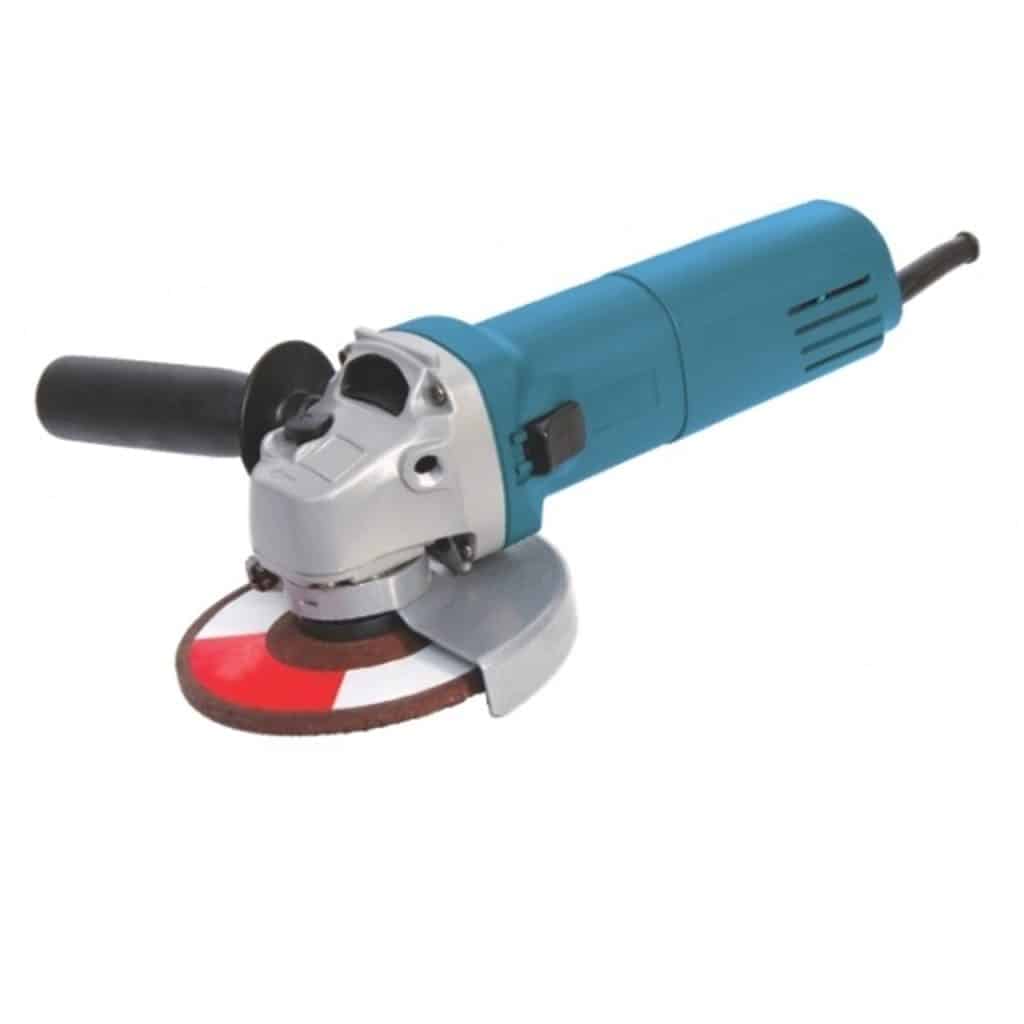
Types of Angle Grinders
A. Corded vs. Cordless Angle Grinders
- Corded Angle Grinders: Corded angle grinders are powered by an electrical outlet through a power cord. They offer consistent and uninterrupted power, making them suitable for prolonged tasks. These grinders often deliver higher power levels, making them well-suited for heavy-duty applications. They are commonly used in workshops, construction sites, and manufacturing facilities where access to a power source is readily available.
- Cordless Angle Grinders: Cordless angle grinders, on the other hand, are powered by rechargeable batteries. These grinders provide greater mobility and flexibility, allowing users to work in remote or hard-to-reach areas. While they may have slightly lower power compared to their corded counterparts, advancements in battery technology have significantly improved their performance. Cordless angle grinders are favored by professionals who require portability and DIY enthusiasts working on various projects.
Choosing between corded and cordless angle grinders depends on the nature of your projects, the availability of power sources, and your need for mobility.
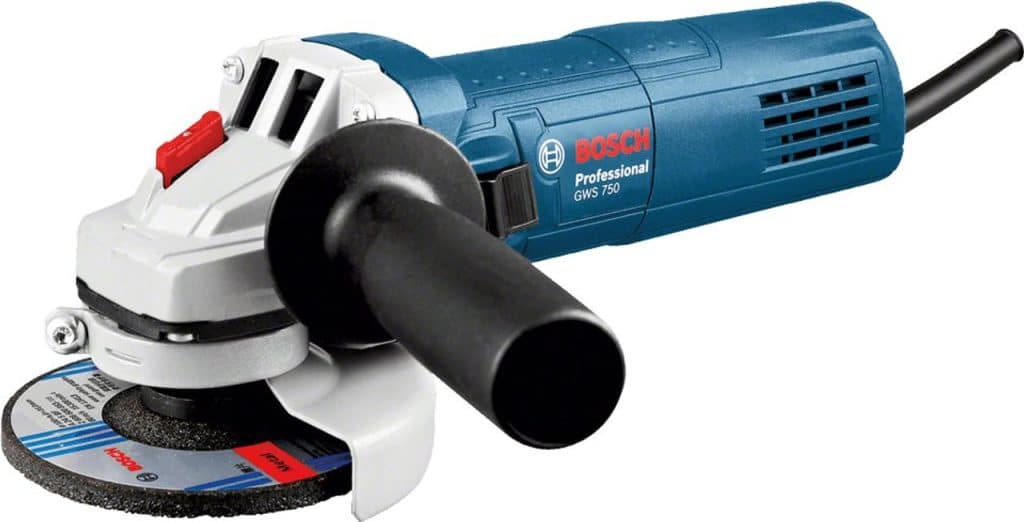
B. Sizes and Disc Diameters
Angle grinders are available in different sizes, typically determined by the diameter of the grinding disc they can accommodate. Common sizes include 4.5 inches, 5 inches, 6 inches, and 7 inches. The choice of size depends on the type of tasks you’ll be performing:
- Small Size (4.5 inches): These are lightweight and maneuverable, suitable for tasks that require precision and control. They are commonly used for cutting tiles, removing rust, and light grinding.
- Medium Size (5 to 6 inches): This size offers a balance between versatility and power. They can handle a variety of tasks, including cutting metal, grinding, and polishing.
- Large Size (7 inches and above): Large angle grinders are designed for heavy-duty applications. They are capable of cutting through thick materials and are commonly used in construction and metal fabrication.
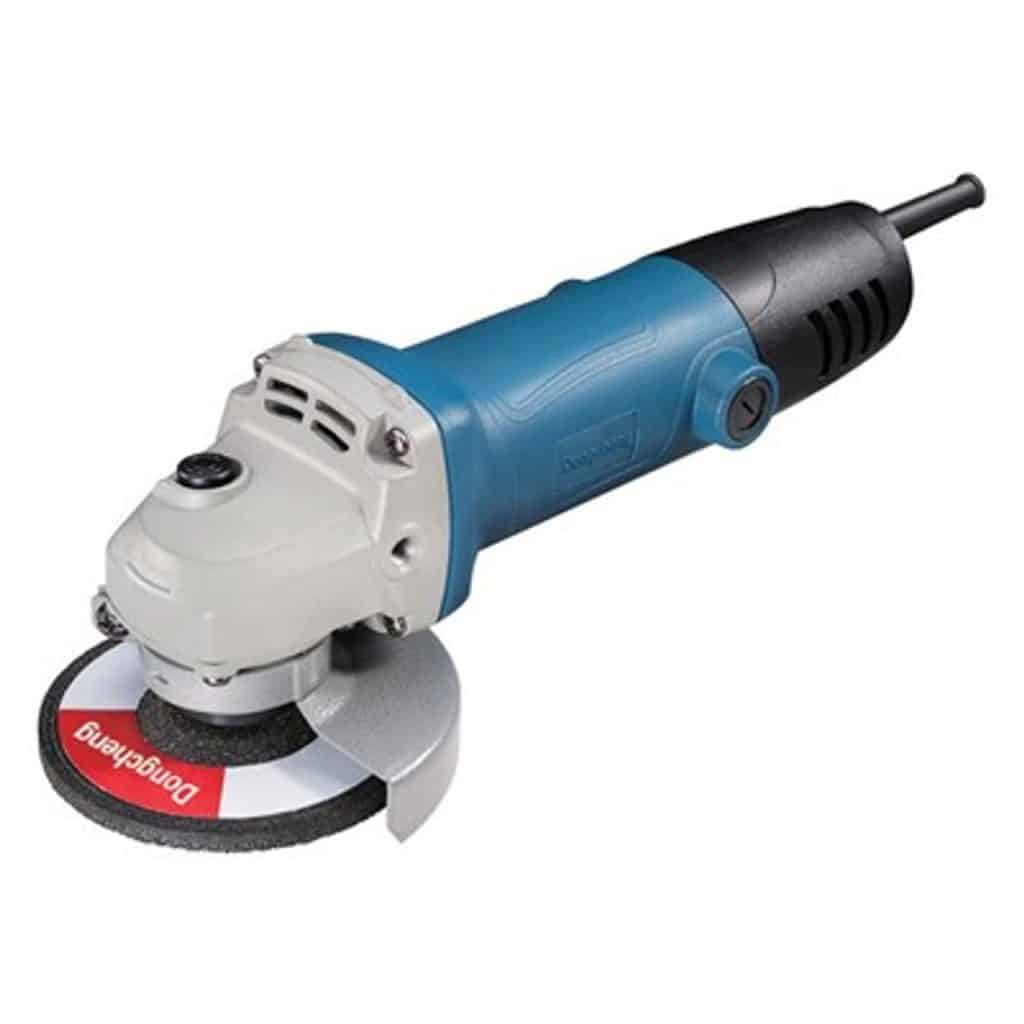
C. Features and Variations
Modern angle grinders come with a range of features and variations that enhance their usability and safety:
- Variable Speed Control: Some angle grinders offer adjustable speed settings, allowing you to adapt the tool’s RPM to the specific task. This feature is especially useful for tasks that require different levels of precision and control.
- Paddle Switch vs. Trigger Switch: Angle grinders can have either a paddle switch or a trigger switch. A paddle switch provides a quick on/off function and is favored for safety, as it can be turned off by releasing the grip. A trigger switch requires continuous pressure to operate.
- Safety Features: Many angle grinders come with safety features such as disc guards, anti-kickback mechanisms, and soft start functions to reduce the risk of accidents.
- Spindle Lock: This feature allows for easy and secure changing of grinding discs and accessories.
- Overload Protection: Some models have overload protection to prevent the motor from overheating during heavy use.
- Handle Variations: Angle grinders may come with adjustable side handles that offer better control and reduce user fatigue during prolonged use.
By understanding the differences between corded and cordless grinders, selecting the appropriate disc diameter, and considering the features that match your requirements, you can choose an angle grinder that complements your tasks and ensures optimal performance. Whether you’re cutting, grinding, or polishing, the right type of angle grinder can significantly enhance your efficiency and results.

Applications of Angle Grinders
Angle grinders are prized for their versatility, making them indispensable tools across a diverse range of industries. From shaping and cutting to smoothing and polishing, their applications span various materials and tasks. Let’s delve into the specific applications of angle grinders across different sectors:
A. Metal Fabrication and Welding: Angle grinders are essential in metal fabrication and welding workshops. They excel in tasks such as cleaning welds, removing excess metal, and preparing surfaces for welding. With the appropriate cutting or grinding disc, angle grinders can precisely shape metal pieces, remove rust, and smooth out sharp edges. They are invaluable for tasks like beveling, chamfering, and cutting metal pipes, bars, and sheets.
B. Cutting, Grinding, and Polishing: One of the primary uses of angle grinders is cutting materials like metal, stone, tiles, and ceramics. They can perform straight cuts, curves, and intricate patterns with the right cutting disc. For grinding, angle grinders efficiently remove material, smooth surfaces, and prepare them for finishing. The versatility extends to polishing applications, where specialized pads and polishing compounds can give surfaces a lustrous finish.
C. Masonry and Concrete Work: Angle grinders equipped with diamond or abrasive discs are invaluable in masonry and concrete work. They can cut through concrete, bricks, and blocks with ease, making them essential tools for construction projects. Angle grinders are also used to create decorative patterns, channels, or grooves in concrete surfaces. They are highly efficient for tasks like removing mortar, leveling uneven surfaces, and creating neat joints.
D. Woodworking and Carpentry: While angle grinders are often associated with metalworking, they also have a place in woodworking and carpentry. Wood carving and shaping become more accessible with the right attachments, allowing artisans to sculpt intricate details. In carpentry, angle grinders help shape wood for joints, bevel edges, and remove imperfections. Additionally, they are used for tasks like stripping old paint and smoothing wooden surfaces.
E. Automotive Repairs and Restoration: In the automotive industry, angle grinders are used for various repairs and restoration projects. They are instrumental in cutting metal panels, grinding welds, and removing rust from car surfaces. Angle grinders also aid in bodywork tasks such as shaping, smoothing, and preparing surfaces for painting.
F. Home Improvement and DIY Projects: For DIY enthusiasts and homeowners, angle grinders offer an array of applications. From tile cutting and shaping to removing old paint from furniture, they enhance the efficiency of home improvement projects. Angle grinders can be used to modify and customize materials for DIY creations, ensuring precision and professional-looking results.
G. Gardening and Landscaping: In gardening and landscaping, angle grinders can tackle tasks like cutting tree roots, shaping stones for pathways, and creating unique garden features. With the appropriate attachments, they can also sharpen gardening tools and remove rust from metal garden structures.
H. Artistic Creations: Angle grinders have found their way into the realm of art, where they are used to create sculptures, decorative metalwork, and unique textures on various materials. Artists appreciate their ability to quickly shape and modify materials, enabling the expression of creative ideas.
The versatility of angle grinders transcends industries, making them indispensable tools for professionals and DIY enthusiasts alike. By understanding their diverse applications and mastering the techniques required for each task, you can harness the full potential of these tools to achieve remarkable results.
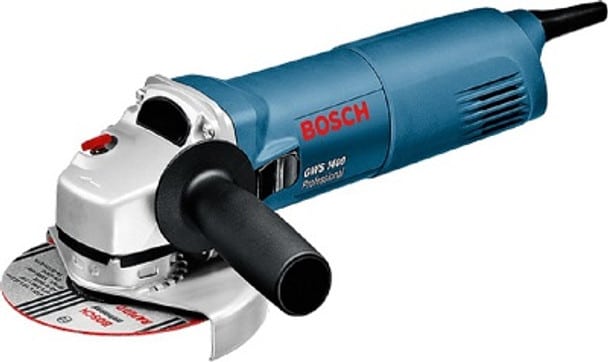
Components and Mechanics of Angle Grinders
Angle grinders are intricate machines composed of various components that work in harmony to deliver the required performance. Understanding these components and their mechanics is essential for safe and effective operation. In this section, we’ll delve into the key components that make up angle grinders and how they contribute to the tool’s functionality.
A. Motor and Power Source: The heart of an angle grinder is its motor, responsible for generating the rotational power needed for cutting, grinding, and polishing. The motor’s power is measured in watts, and higher wattage generally indicates greater cutting and grinding capabilities. Angle grinders can be powered either by electricity (corded) or rechargeable batteries (cordless).
- Corded Angle Grinders: Corded angle grinders draw power from an electrical outlet through a power cord. They offer consistent and uninterrupted power, making them suitable for tasks that require continuous operation.
- Cordless Angle Grinders: Cordless angle grinders are powered by rechargeable batteries. These provide portability and flexibility, allowing users to work in remote areas or places without power outlets.
B. Disc Guard and Side Handle: The disc guard, often adjustable, is a crucial safety feature that shields the user from sparks, debris, and fragments generated during operation. It also helps prevent accidental contact with the rotating disc. The side handle provides additional stability and control during operation, especially when dealing with heavy-duty tasks.
C. Spindle and Arbor Nut: The spindle is the part that holds the grinding or cutting disc in place. It’s located at the front of the angle grinder. The arbor nut secures the disc onto the spindle. Proper installation and tightening of the arbor nut are essential for safe operation. Many angle grinders have a spindle lock button that immobilizes the spindle, making it easier to change discs.
D. On/Off Switch and Trigger Lock: The on/off switch controls the operation of the angle grinder. Depending on the design, the switch can be a paddle switch or a trigger switch.
- Paddle Switch: Paddle switches are designed for safety. Releasing the paddle immediately turns off the grinder. They are favored for tasks that require quick shut-off.
- Trigger Switch: Trigger switches require continuous pressure to keep the tool running. Releasing the trigger stops the operation. Trigger switches are more common in cordless models.
Many angle grinders have a trigger lock feature that allows you to lock the trigger in the “on” position, reducing hand fatigue during extended use. However, this feature must be used cautiously, and the trigger should never be locked if the tool is not in use or if it’s unattended.
Understanding the intricate components of angle grinders is essential for safe and effective operation. By familiarizing yourself with the motor types, safety features, and control mechanisms, you’ll be better equipped to use angle grinders to their full potential while prioritizing safety.

Safety Precautions when Using Angle Grinders
Safety is paramount when operating angle grinders due to the high-speed rotation of the cutting and grinding discs. Understanding and adhering to proper safety precautions is essential to prevent accidents and injuries. In this section, we’ll delve into the key safety measures to take when using angle grinders.
A. Personal Protective Equipment (PPE): Before operating an angle grinder, ensure you are wearing the appropriate personal protective equipment (PPE) to safeguard yourself from potential hazards:
- Safety Glasses or Goggles: Protect your eyes from flying debris, sparks, and dust.
- Ear Protection: Angle grinders can generate significant noise; wear ear protection to prevent hearing damage.
- Dust Mask or Respirator: If the task generates dust or particles, a dust mask or respirator will help you breathe comfortably.
- Gloves: Wear sturdy, non-slip gloves to provide a secure grip and protect your hands from sparks and sharp edges.
- Long Sleeves and Pants: Cover your arms and legs to shield them from sparks and debris.
- Steel-Toed Boots: Sturdy footwear provides protection from falling objects and potential foot injuries.
B. Proper Work Area Setup: Creating a safe work environment is crucial to prevent accidents. Follow these guidelines:
- Clear Workspace: Ensure your work area is clutter-free, well-lit, and adequately ventilated.
- Secure Material: Use clamps or vices to secure the material you’re working on, preventing it from moving during operation.
- Keep Others Away: Restrict access to your work area to prevent bystanders from getting too close to the operation.
C. Handling the Grinder: Proper handling of the angle grinder minimizes the risk of accidents:
- Two-Handed Grip: Hold the grinder with both hands for better control and stability.
- Maintain Balance: Maintain a balanced stance with your feet shoulder-width apart.
- Avoid Overreach: Maintain a comfortable stance; avoid overreaching to prevent loss of control.
D. Safe Disc Installation and Removal: Incorrect installation or removal of the grinding or cutting disc can lead to accidents:
- Unplugged Cord: Ensure the angle grinder is unplugged (corded) or the battery is removed (cordless) before changing discs.
- Use Proper Tools: Use the designated wrenches to loosen or tighten the arbor nut.
- Check Compatibility: Ensure the disc is compatible with the grinder’s size and RPM rating.
E. Handling Sparks and Dust: Sparks and dust are common byproducts of angle grinding that require attention:
- Spark Deflection: Position the grinder to direct sparks away from your body and others.
- Dust Control: Use a dust collection system or work outdoors to minimize dust exposure. If indoors, use a shop vacuum with a HEPA filter.
- Fire Hazards: Be cautious when working in areas with flammable materials, as sparks can ignite them.
By meticulously following these safety precautions, you can create a secure environment for angle grinder operation. Prioritizing personal protective equipment, proper workspace setup, and safe handling techniques ensures that you can harness the power of angle grinders while minimizing risks. Always remember that safety is the cornerstone of efficient and accident-free angle grinder usage.
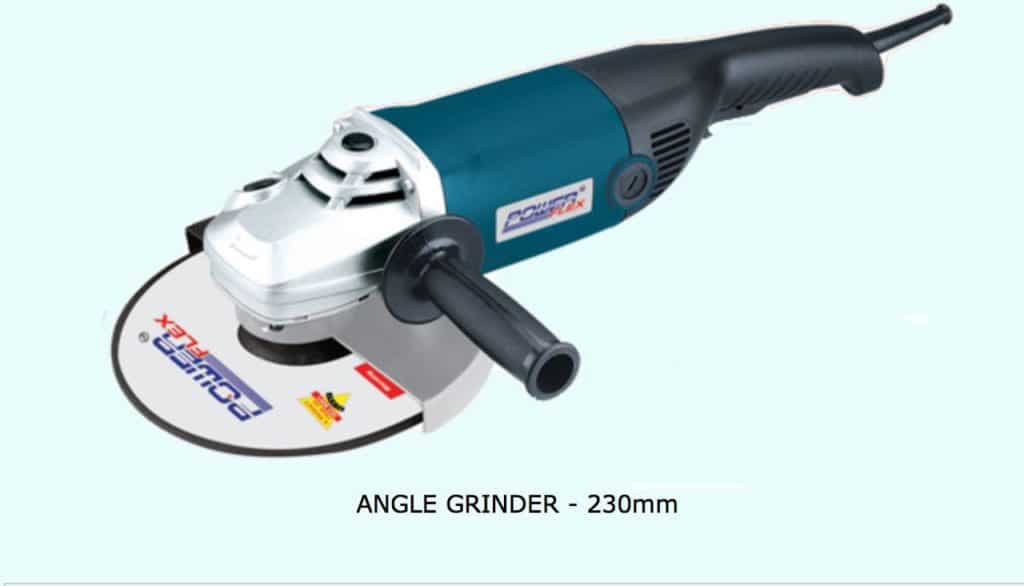
Disc Selection and Accessories
The versatility of angle grinders is amplified by the wide variety of discs and accessories available, each designed to cater to specific tasks. Disc selection is a crucial consideration as it directly impacts the quality and efficiency of your work. In this section, we’ll delve into the different types of discs, factors that influence disc choice, and the proper techniques for changing discs and attachments.
A. Types of Discs (Cutting, Grinding, Sanding, Polishing):
Angle grinders can accommodate a range of discs and attachments, each with its unique purpose:
- Cutting Discs: These discs are used for precise cutting of materials such as metal, tiles, and concrete. They come in various thicknesses and designs to suit different applications.
- Grinding Discs: Designed for grinding and shaping tasks, these discs effectively remove material from surfaces. They are available in various grits and materials for different materials and levels of aggression.
- Sanding Discs: Used for sanding and smoothing surfaces, sanding discs are available in different grits. Coarser grits are suitable for removing material, while finer grits are used for finishing.
- Polishing Pads: Polishing pads are used in conjunction with polishing compounds to achieve a high-gloss finish on metal, stone, and other surfaces.
B. Factors Influencing Disc Choice:
Several factors determine the appropriate disc for your task:
- Material: Different materials require specific discs for optimal performance. Choose discs that are designed to work with the material you’re working on.
- Task: Determine whether you’re cutting, grinding, sanding, or polishing, and choose the appropriate disc for that task.
- Grit: For grinding and sanding discs, the grit level determines the coarseness of the abrasive. Coarser grits remove material more aggressively, while finer grits provide a smoother finish.
- Compatibility: Ensure the chosen disc is compatible with your angle grinder’s size and RPM rating.
C. Changing Discs and Attachments:
Properly changing discs and attachments is essential for safety and performance:
- Unplug or Remove Battery: Always disconnect the angle grinder from the power source before changing discs.
- Use Disc Removal Tool: Most angle grinders come with a disc removal tool for changing discs. Follow the manufacturer’s instructions to safely change discs.
- Securely Tighten Arbor Nut: Ensure the arbor nut is properly tightened to prevent the disc from coming loose during operation.
Angle Grinder Techniques and Tips
Mastering various techniques is key to achieving professional results with angle grinders. Whether cutting, grinding, or polishing, proper techniques enhance efficiency and safety.
A. Cutting Techniques:
Cutting with an angle grinder requires precision and control:
- Marking the Cut: Use a pencil or chalk to mark the cutting line on the material.
- Steady Progression: Apply light pressure and let the disc do the work. Avoid forcing the grinder through the material.
- Angle of Cut: Hold the grinder at the appropriate angle for your cut. For straight cuts, keep the grinder perpendicular to the material.
B. Grinding and Shaping Methods:
Grinding and shaping require a steady hand and controlled movements:
- Even Pressure: Apply even pressure while grinding to avoid creating uneven surfaces.
- Crosshatch Patterns: For uniform grinding, use a crosshatch pattern, moving the grinder back and forth.
C. Polishing and Finishing Approaches: Polishing involves careful application of polishing compounds and proper pad usage:
- Speed and Pressure: Use lower speed settings and light pressure for polishing to avoid overheating and damage to the surface.
- Work in Sections: Polish small sections at a time for even results.
Maintenance and Care
Maintaining your angle grinder ensures its longevity and safe operation:
A. Regular Inspection: Periodically inspect the grinder for signs of wear, damage, or loose components.
B. Cleaning and Lubrication: Keep the grinder clean by wiping off dust and debris. Lubricate moving parts as recommended by the manufacturer.
C. Storage and Handling: Store the angle grinder in a dry and safe place, away from moisture and extreme temperatures. Properly store discs and accessories to prevent damage.
Angle grinders are versatile tools that, when used with proper techniques and safety precautions, can tackle a wide range of tasks. By choosing the right discs, mastering different techniques, and maintaining the tool’s condition, you can make the most of your angle grinder and achieve exceptional results across various applications.
Common Issues and Troubleshooting
While angle grinders are robust and versatile tools, they can encounter common issues during operation. Addressing these issues promptly ensures safe and efficient use. In this section, we’ll explore common problems like overheating, vibrations, and disc wobbling, along with troubleshooting steps to resolve them.
A. Overheating:
Overheating can occur due to extended use, excessive pressure, or inadequate cooling. It can lead to motor damage and reduced tool life. Here’s how to troubleshoot overheating:
- Solution: Give the grinder a rest to allow it to cool down. If you notice the motor getting excessively hot, let it cool for a few minutes before resuming work.
- Avoid Excessive Pressure: Apply light and even pressure while using the grinder. Excessive pressure can cause the motor to strain and overheat.
- Avoid Blocking Air Vents: Ensure that the air vents of the grinder are not obstructed, as proper ventilation helps dissipate heat.
B. Vibrations:
Vibrations can affect the precision of your work and cause discomfort during operation. Excessive vibrations can indicate issues with the disc, spindle, or motor.
- Solution: Check for loose or damaged components, including the disc, arbor nut, and spindle. Ensure that the disc is properly centered and tightened.
- Inspect Disc: If the disc is damaged or unevenly worn, replace it with a new one. A balanced disc reduces vibrations.
- Inspect Arbor Nut: Make sure the arbor nut is securely tightened. Loose arbor nuts can lead to wobbling and vibrations.
C. Disc Wobbling:
Disc wobbling, or lateral movement of the disc, can result in uneven cuts or grinds. It’s crucial to address this issue promptly to avoid accidents and subpar results.
- Solution: Begin by ensuring that the disc is compatible with the grinder’s size and RPM rating. Incorrectly sized or unbalanced discs can cause wobbling.
- Check Arbor Nut: Ensure the arbor nut is securely tightened. If the nut is loose, the disc can wobble during operation.
- Inspect Disc: If the disc itself is damaged or warped, it can cause wobbling. Replace the disc with a new one if needed.
D. Unusual Noises:
Unusual noises, such as grinding, squealing, or rattling, can indicate mechanical issues within the grinder. Ignoring these noises can lead to further damage.
- Solution: Stop using the grinder immediately if you hear unusual noises. Carefully inspect the tool for loose or damaged components, and consult the user manual for guidance.
- Professional Inspection: If the issue persists or the noises continue, it’s advisable to have the grinder inspected by a professional technician.
E. Electric Cord Issues (Corded Grinders):
Corded angle grinders can experience problems with the power cord, such as cuts, fraying, or exposed wires.
- Solution: If you notice any damage to the power cord, unplug the grinder and discontinue use. Replace the damaged cord or consult a professional electrician for repairs.
Troubleshooting common issues promptly not only ensures the longevity of your angle grinder but also promotes safe and efficient operation. By adhering to proper maintenance practices and promptly addressing problems, you can continue to use your angle grinder effectively across various applications.
Related Article
kinds of power tools for construction
What Power Tools Do Electricians Use
Conclusion
This guide has explored angle grinders comprehensively, covering mechanics, techniques, safety, and applications. With their diverse capabilities in metalwork, woodworking, masonry, and more, angle grinders offer endless potential. Master their use, prioritize safety, and unleash your creativity for successful projects.
Contact us for angle grinders of all sizes
